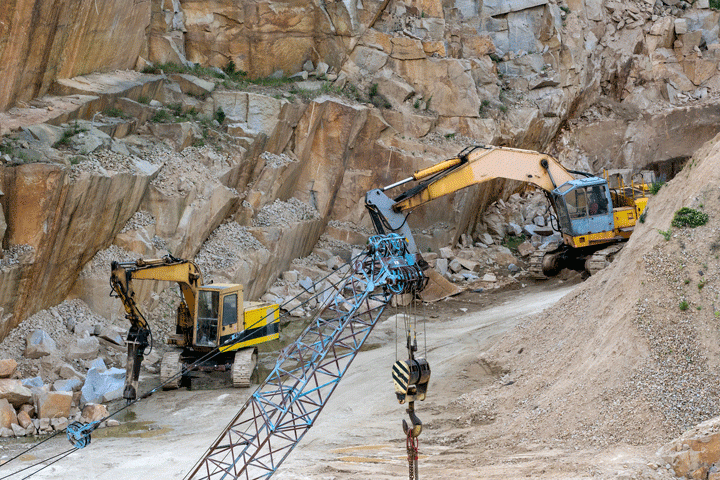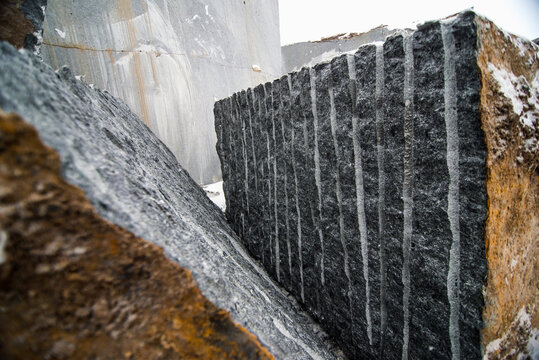Exploring Granite Quarries in South Africa: A Comprehensive Guide
Exploring Granite Quarries in South Africa: A Comprehensive Guide
Blog Article
Checking Out the Hidden Depths of Granite Quarrying: Introduction Nature's Masterpiece
The globe of granite quarrying is a realm where nature's old procedures meet human resourcefulness in a symbiotic dancing that has shaped landscapes and human beings for centuries. From the detailed geological formations that birth this magnificent rock to the precise strategies and devices used in its extraction, the trip into granite quarrying is a testimony to the harmonious coexistence between male and nature. As we begin to unravel the layers of this sector, we are met a tapestry of environmental considerations, creative ventures, and global implications that beckon us to explore even more the hidden midsts of this all-natural masterpiece.

Geological Formation of Granite
Granite, a kind of igneous rock, creates deep within the Planet's crust via an intricate process of cooling and solidification. This natural stone originates from the sluggish condensation of molten lava deep under the Planet's surface area. As magma cools down, mineral crystals such as feldspar, quartz, and mica begin to form, developing the distinct speckled patterns and colors attribute of granite. granite quarries in south africa. The cooling procedure can take millions of years, permitting for the development of large mineral grains that offer granite its distinctive texture and sturdiness.
Geologically, granite is categorized as a felsic invasive rock, meaning it is abundant in silica minerals and types from lava that horns in existing rock developments. This invasive formation process adds to granite's coarse-grained appearance and high compressive stamina, making it a preferred option for construction and building functions. Because of its charm, sturdiness, and resistance to warm and scratches, granite has ended up being a sought-after product for kitchen counters, floor covering, and ornamental elements in both property and business setups.
Quarrying Methods and Equipment
Utilizing advanced equipment and precise approaches, quarrying procedures remove granite from natural down payments with performance and precision. The process begins with the recognition of suitable granite down payments via geological studies. Once a viable website lies, the extraction stage starts. Diamond cable saws are commonly made use of to puncture the granite, as they use precision reducing without creating damages to the rock. These cord saws are run by experienced specialists that thoroughly navigate the cuts to ensure optimal return from the quarry.
Huge excavators and loaders are then employed to get rid of the cut granite blocks from the quarry. In general, the combination of sophisticated machinery and competent labor is crucial in the quarrying procedure to extract granite efficiently while maintaining its quality.
Ecological Effect and Sustainability
With the increasing concentrate on environmental awareness in industrial practices, the granite quarrying sector is under analysis for its impact on ecological communities and natural deposits. Quarrying for granite can have considerable ecological consequences, consisting of environment damage, dirt disintegration, and water air pollution. The extraction of granite typically includes the usage of dynamites to damage the rock, leading to noise and air pollution. Furthermore, the heavy machinery used in quarrying operations takes in large amounts of power, contributing to greenhouse gas discharges.
To minimize these ecological impacts, sustainable quarrying techniques are being developed. Business are implementing measures such as reforestation programs, water recycling systems, and dust suppression methods to decrease their eco-friendly footprint. Additionally, some quarries are now using renewable resource resources to power their procedures, minimizing dependence on fossil gas.
Artistry in Granite Sculpting
The detailed procedure of changing raw granite right into sensational try this artworks requires outstanding skill and workmanship. granite quarries in south africa. Granite sculpting is a careful art kind that requires patience, imagination, and a severe understanding of the stone's residential or commercial properties. Sculptors must have a deep appreciation for the natural elegance of granite and the capacity to picture and draw out the surprise virtuosity within it
Creativity in granite sculpting entails a collection of precise steps. The sculptor starts by selecting the perfect granite piece, thinking about factors such as shade, veining, and structure.
The result of granite sculpting is an impressive work of art that showcases official site the sculptor's ability and the fundamental beauty of the rock itself. Whether it's a magnificent statuary, a complex fountain, or an in-depth relief sculpting, granite sculptures stand as testaments to human imagination and the enduring appeal of all-natural materials.
International Importance of Granite Sector
Playing a critical duty in building and building projects worldwide, the granite market offers as a foundation in the international economy. With its adaptability, resilience, and visual appeal, granite has come to be a preferred option for a vast array of applications, including kitchen counters, floor covering, monuments, and facades. The sector not just offers employment possibilities web but also drives economic development via exports and local consumption.

Furthermore, the granite sector plays a crucial role in lasting development campaigns by promoting liable quarrying practices and purchasing environment-friendly technologies. As the need for all-natural stone remains to rise, the international importance of the granite sector fit city landscapes and maintaining cultural heritage can not be overemphasized.
Conclusion
In verdict, the granite quarrying sector plays an essential duty in showcasing nature's work of art. From its geological formation to the creativity in sculpting, granite continues to hold international significance.
Report this page